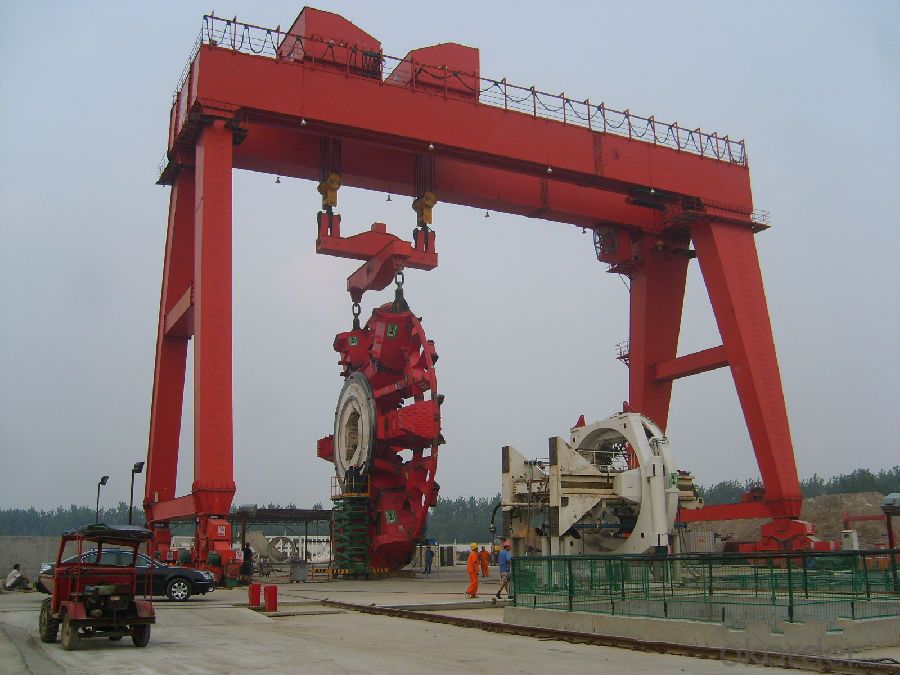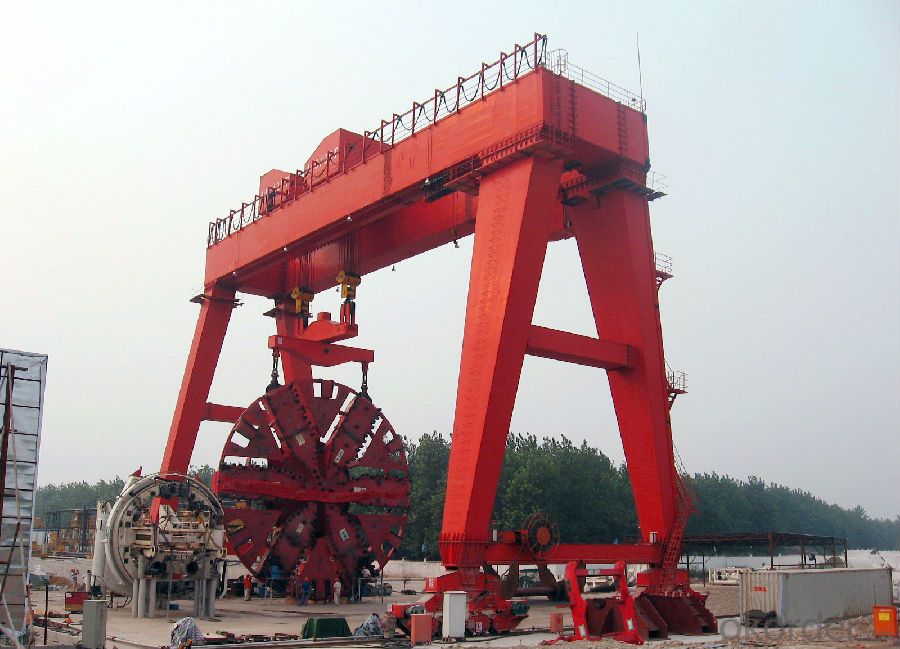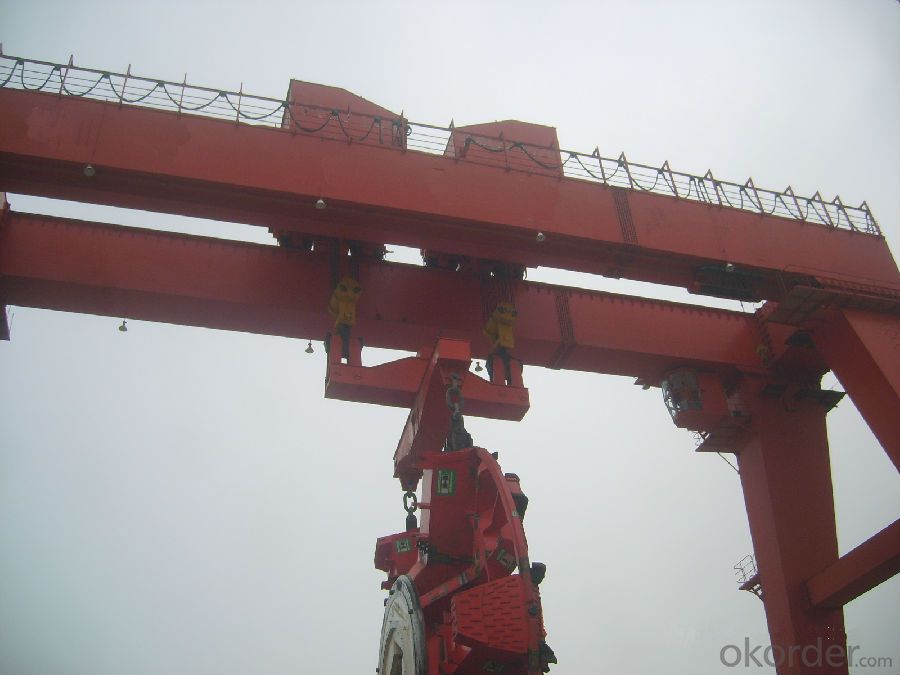Loading Port:China main port
Payment Terms:TT OR LC
Min Order Qty:1 set
Supply Capability:1 set/month
Profile
Gantry crane with shield(DGM for short) is mainly used for installation of cutter and shield of shield machine which is underground trenchless device, and are used for lifting duct piece to support tunnel during work progress. DGM has stable performance, high production efficiency and it is easy to be maintained. The lifting part can be rotated to adapt the requirements of tunneling at different directions. It has flexible operating mode, complete safety indication and overload protection device, which can uttermost ensure the safety of operator and equipment. Electrical system adopts PLC variable frequency speed regulating which is propitious to control all the mechanisms. Famous manufacturer of fittings is adopted to guarantee the quality of the complete machine. The last issued national standards are executed to design, manufacture and inspect.
Environmental conditions
The power source of the crane is three-phase AC;rated frequency is 50Hz;rated voltage is 380V;
The temperature of working environment is -20~+45℃;the max.relative humidity is no less than 95%(there exists condensation)
Wind speed during work is no more than 20m/s
Working class of the crane is A3、A4
The crane that has special requirements for environment condition shall execute the contract articles.
Order instruction
The basic parameters (rated lifting weight, lifting height and span etc.)of the crane shall be described clearly when the contract is signed or the crane is ordering. Thus, we can satisfy the working conditions and operating conditions.
'
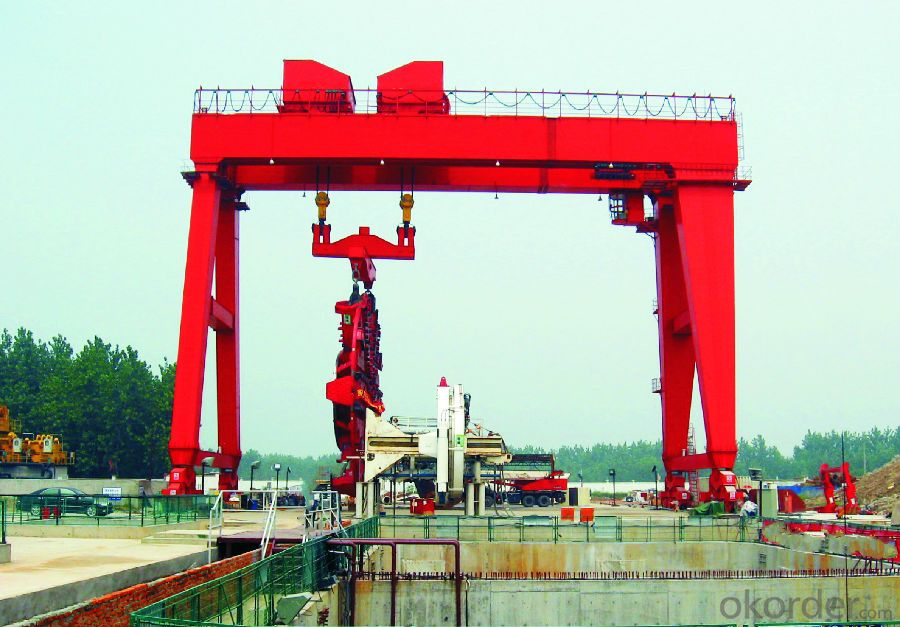
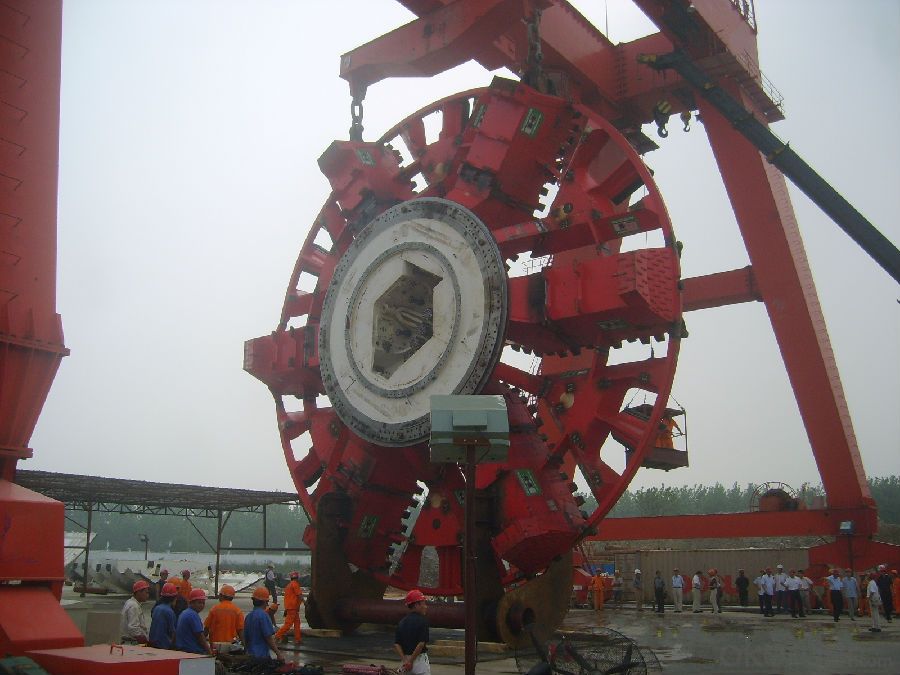
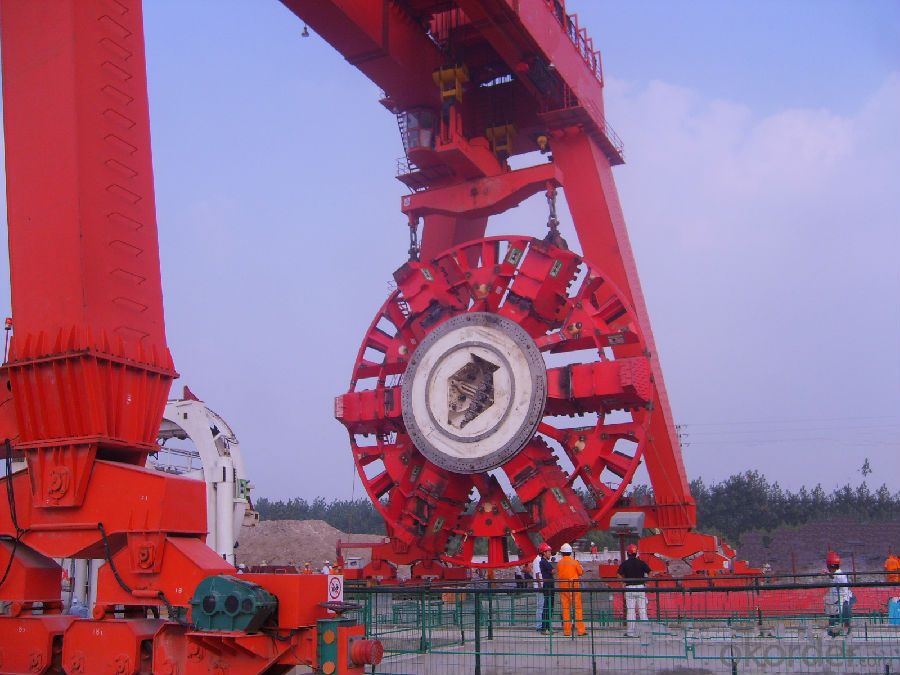
Introduction of Tunnel boring machine
In hard rock, either shielded or open-type TBMs can be used. Hard rock TBMs excavate rock with disc cutters mounted in the cutter head. The disc cutters create compressive stress fractures in the rock, causing it to chip away from the tunnel face. The excavated rock (muck) is transferred through openings in the cutter head to a belt conveyor, where it runs through the machine to a system of conveyors or muck cars for removal from the tunnel.
Open-type TBMs have no shield, leaving the area behind the cutter head open for rock support. To advance, the machine uses a gripper system that pushes against the tunnel walls. Not all machines can be continuously steered while gripper shoes push on the walls, as with a Wirth machine, which only steers while ungripped. The machine will then push forward off the grippers gaining thrust. At the end of a stroke, the rear legs of the machine are lowered, the grippers and propel cylinders are retracted. The retraction of the propel cylinders repositions the gripper assembly for the next boring cycle. The grippers are extended, the rear legs lifted, and boring resumes. The open-type, or Main Beam, TBM does not install concrete segments behind with other machines. Instead, the rock is held up using ground support methods such as ring beams, rock bolts, shotcrete, steel straps, ring steel and wire mesh.
In fractured rock, shielded hard rock TBMs can be used, which erect concrete segments to support unstable tunnel walls behind the machine. Double Shield TBMs have two modes; in stable ground they grip the tunnel walls to advance. In unstable, fractured ground, the thrust is shifted to thrust cylinders that push against the tunnel segments behind the machine. This keeps the thrust forces from impacting fragile tunnel walls. Single Shield TBMs operate in the same way, but are used only in fractured ground, as they can only push against the concrete segments.
In soft ground with very high water pressure or where ground conditions are granular (sands and gravels) so much so that a plug could not be formed in the Archimedes screw, Slurry Shield TBMs are needed. The cutterhead is filled with pressurised slurry which applies hydrostatic pressure to the excavation face. The slurry also acts as a transport medium by mixing with the excavated material before being pumped out of the cutterhead back to a slurry separation plant, usually outside of the tunnel. Slurry separation plants are multi-stage filtration systems, which remove particles of spoil from the slurry so that it may be reused in the construction process. The limit to which slurry can be 'cleaned' depends on the particle size of the excavated material. For this reason, slurry TBMs are not suitable for silts and clays as the particle sizes of the spoil are less than that of the bentonite clay from which the slurry is made. In this case, the slurry is separated into water, which can be recycled and a clay cake, which may be polluted, is pressed from the water.
Open face TBMs in soft ground rely on the fact that the face of the ground being excavated will stand up with no support for a short period of time. This makes them suitable for use in rock types with a strength of up to 10MPa or so, and with low water inflows. Face sizes in excess of 10 metres can be excavated in this manner. The face is excavated using a backactor arm or cutter head to within 150mm of the edge of the shield. The shield is jacked forwards and cutters on the front of the shield cut the remaining ground to the same circular shape. Ground support is provided by use of precast concrete, or occasionally SGI (Spheroidal Graphite Iron), segments that are bolted or supported until a full ring of support has been erected. A final segment, called the key, is wedge-shaped, and expands the ring until it is tight against the circular cut of the ground left behind by cutters on the TBM shield. Many variations of this type of TBM exist.
